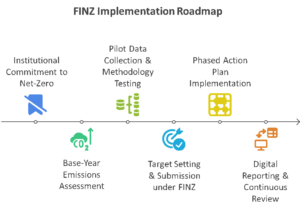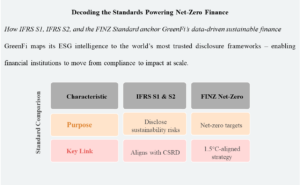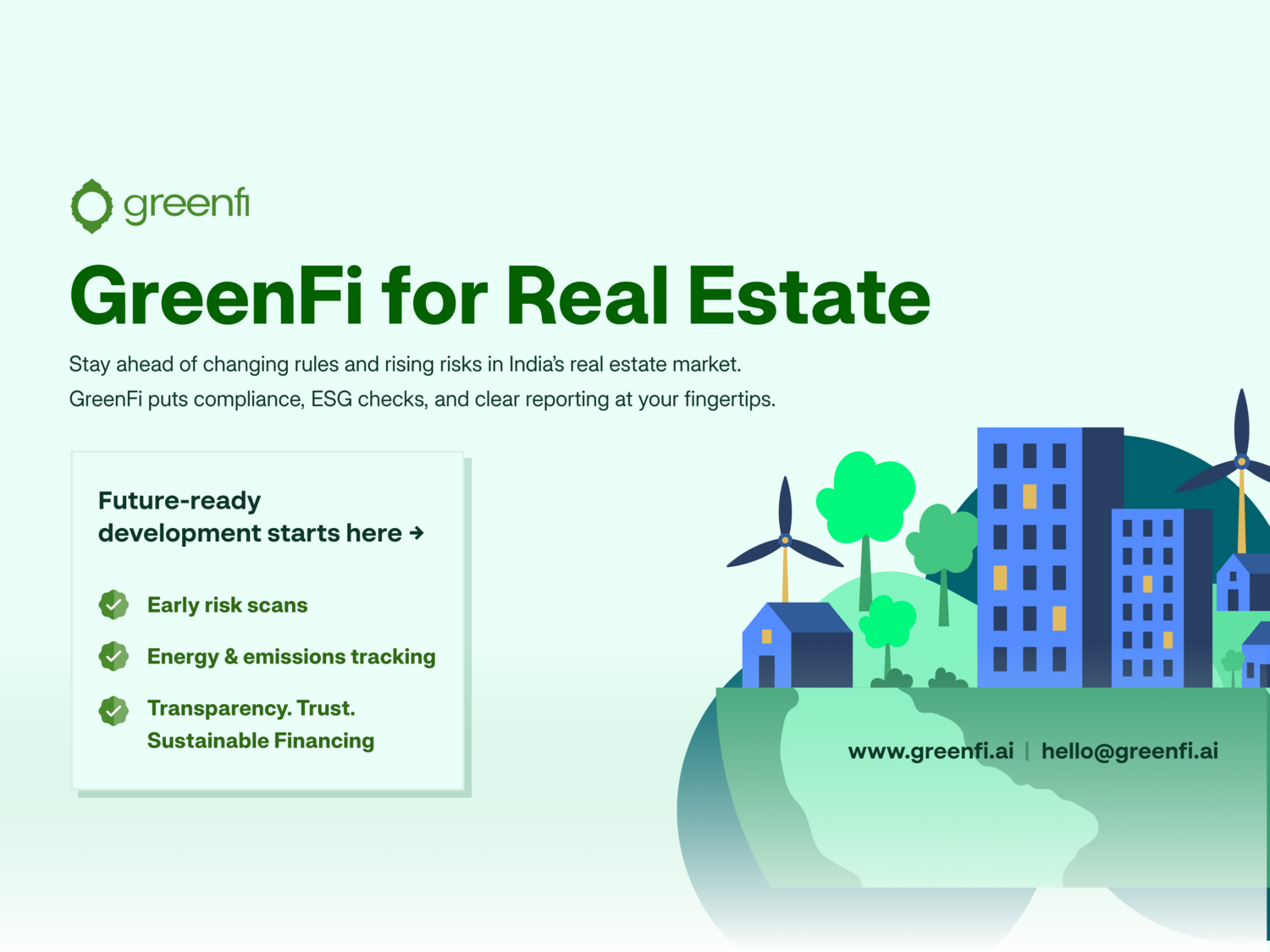SBTi Launches the Financial Institutions Net-Zero (FINZ) Standard
On 22 July 2025, the Science Based Targets initiative (SBTi) – a global organization that helps companies set science-aligned climate targets to limit global warming to 1.5°C published its first-ever Financial Institutions Net-Zero Standard (FINZ) – this is a dedicated science based framework empowering banks, insurers, asset managers and capital-market participants to align lending, investment, underwriting and capital activities with the 1.5 °C net-zero goal by 2050.
Why It Matters Now
- Bridges a Decade-Long Gap: FINZ introduces the first tailored methodology to address Scope 3, Category 15 emissions i.e. financed emissions across all major financial activities.
- Transition Period until December 2026: During this time, institutions may choose to validate their targets under either the new FINZ framework or the existing Near-Term Criteria.
- Mandatory from January 2027: From this point forward, FINZ is expected to become the default standard for both near-term and net-zero target validation across the financial sector.
What FINZ signals for the sector
- Capital allocation now carries real climate accountability
Every loan, investment and insurance policy is subject to emissions scrutiny. FINZ codifies responsibility for financed emissions in portfolios.
- Global standards are converging
FINZ aligns with IFRS S1 & S2, TCFD, GRI, EU regulations (e.g. CSRD, SFDR) and integrates existing SBTi frameworks for coherence and comparability.
- Action over ambition
Institutions can no longer rely on goodwill. FINZ requires measurable emissions reduction across diverse asset types from equities and debt to underwriting and project finance.
- Transformation that is measurable and verifiable
Institutions must use digital-first tools (e.g., XBRL, AI-powered assurance) for tracked and verified reporting enabling audit-grade transparency.
Early Movers will Lead the Transition
By acting now, institutions will not just meet evolving compliance thresholds they can set the standard. Early adopters will benefit through stronger stakeholder trust, capital access and competitive resilience as net-zero finance becomes mainstream.
| Key Timeline: SBTi’s Roadmap to Net-Zero Standards | |
| Date | Milestone |
| Aug 22, 2024 | Public consultation webinar on Draft FINZ Standard, launching pilot testing |
| July–Dec 2024 | Pilot testing phase with ~30 institutions and public feedback process |
| July 22, 2025 | Final FINZ Standard v1.0 published and became effective immediately |
| Sept 10, 2025 | Launch webinar for institutions to explore implementation and target-setting strategies |
| Dec, 2026 | Transition period ends; institutions must use FINZ for validation |
| From Jan 2027 | FINZ becomes the default standard for new net-zero target submissions |
What’s Next?
In GreenFi’s upcoming blog series, we will explore:
- How FINZ aligns with IFRS S2 and climate disclosure mandates
- Tools to measure and manage portfolio-level financed emissions
- Implementation guidance for micro finance, MSME and retail segments
References
- Science Based Targets initiative (SBTi)
- CSRD & SFDR Regulations – EU
- XBRL and Digital Reporting Standards
With FINZ now setting the global benchmark for financed emissions accountability, financial institutions must act decisively.
GreenFi enables you to track and reduce portfolio emissions across asset classes, align with FINZ, IFRS S2 and global climate standards, use AI-powered tools for audit-ready and verifiable reporting.
Stay ahead of regulation. Build investor trust. Drive measurable impact.
Contact us at hello@greenfi.ai to discover how GreenFi can accelerate your institution’s journey to net-zero.












































